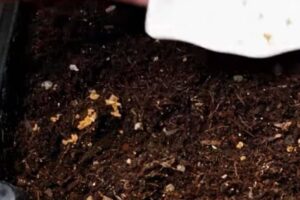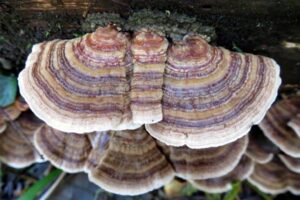
Transplanting lavender is a great way to give your garden a fresh look and to ensure that your plants are getting the proper care and nutrients they need. Lavender is a hardy and drought-tolerant plant, making it a great option for many gardens. But when is the best time to transplant your lavender?
The best time to transplant lavender is in the late spring or early summer months when the soil is warmer and there is plenty of time for the plant to take root and establish itself before winter sets in. Make sure to provide plenty of water and nutrients to ensure that your lavender has the best chance of success.
Benefits of Transplanting Lavender
Transplanting lavender can be a great way to enhance the look and feel of your garden. Lavender is a beautiful and fragrant perennial that can give any garden a touch of elegance. In addition to its aesthetic value, there are many benefits to transplanting lavender.
Lavender is drought tolerant, requires minimal maintenance, and can provide a natural insect repellent in your garden. Lavender can also help reduce stress and promote relaxation, allowing you to enjoy a peaceful garden space.
Whether you are looking to add a touch of beauty to your garden or wanting to reap the many health benefits lavender offers, transplanting lavender is a great option.
Factors to Consider Before Transplanting Lavender
When considering transplanting lavender, there are a few factors to take into account. First, lavender grows best in full sun, so make sure you have a location that offers plenty of sunlight and well-draining soil.
Additionally, take into account the lavender variety you’re growing and the climate you live in – some varieties are more tolerant of cold temperatures than others.
Also, be sure to prepare the soil with organic matter and fertilizers before planting, as lavender needs a nutrient-rich environment to thrive.
Finally, consider the size of the pot you’ll be using and the drainage holes – lavender doesn’t like sitting in water and needs to be able to drain freely.
With these considerations in mind, you can ensure your lavender will be transplanted into the perfect spot and happily flourish for years to come!
Preparing the Lavender for Transplanting
When it comes to transplanting lavender, proper preparation is essential for a successful transplant. Lavender needs to be dug up carefully and the roots should be disturbed as little as possible.
It is also important to make sure that the lavender is kept moist during the transplanting process. Once the lavender has been dug up, it should be placed in a bucket of water and left to sit for a few hours.
This will help to ensure that the lavender is adequately hydrated during the transplanting process. The lavender should then be carefully placed in its new location and the soil should be lightly packed around the roots.
Finally, the lavender should be watered to ensure that it is fully hydrated and ready for growth. With the right preparation and care, your lavender transplant should be successful and you can enjoy your fragrant purple blooms all summer long!

Steps for Transplanting Lavender
Transplanting Lavender can be an easy and rewarding endeavor. Here are some steps to ensure a successful transplant:
1. Choose an area with well-draining soil and full sun. Lavender loves a spot that’s sunny and warm.
2. Dig a hole at least twice as wide as the root ball of your lavender plant.
3. Gently remove the plant from its container and place it in the hole.
4. Fill the hole with soil and gently tamp down to remove any air pockets.
5. Water the newly planted lavender to ensure it is well-watered.
6. Add a light layer of mulch around the base of the plant to help retain moisture and keep weeds away.
Transplanting Lavender is a relatively straightforward task that will produce beautiful results. Following these simple steps will ensure that your lavender is transplanted successfully and will provide years of fragrant blooms.
Aftercare for Transplanted Lavender
Taking care of a transplanted lavender plant doesn’t have to be a daunting task. With the right knowledge, you’ll be able to keep your lavender thriving for years to come.
To ensure successful transplanting, start with the right soil. Use a soil that is well draining and has a neutral pH level. Make sure to water your lavender regularly, as it prefers moist soil.
To encourage strong and healthy growth, fertilize your lavender every couple of weeks during the spring and summer months.
Finally, make sure to prune your lavender regularly to promote growth and air circulation. With these tips in mind, you’ll be sure to keep your transplanted lavender plant healthy and happy.
FAQs About the when is the best time to transplant lavender
What is the best soil type for transplanting lavender?
Answer: The best soil type for transplanting lavender is a well-draining, sandy loam soil.
What is the best season to transplant lavender?
Answer: The best season to transplant lavender is in the spring or fall when the temperature is cooler and the plant is not in active growth.
How often should I water my lavender after transplanting?
Answer: Water your lavender thoroughly after transplanting and then water it regularly, allowing the soil to dry slightly between watering.
Conclusion
Overall, the best time to transplant lavender is in the spring or early summer, after any danger of frost has passed. Lavender should be transplanted into well-draining soil, and watered lightly until the plants are established. Lavender should be watered deeply but infrequently to encourage the plants to form a deep root system. If the lavender is planted in a pot, it should be placed in a sunny area. If the lavender is planted in a garden, it should be planted in an area with partial shade and good drainage. With proper care, lavender transplants should thrive and bring beautiful color and a pleasant fragrance to the garden.








One Comment